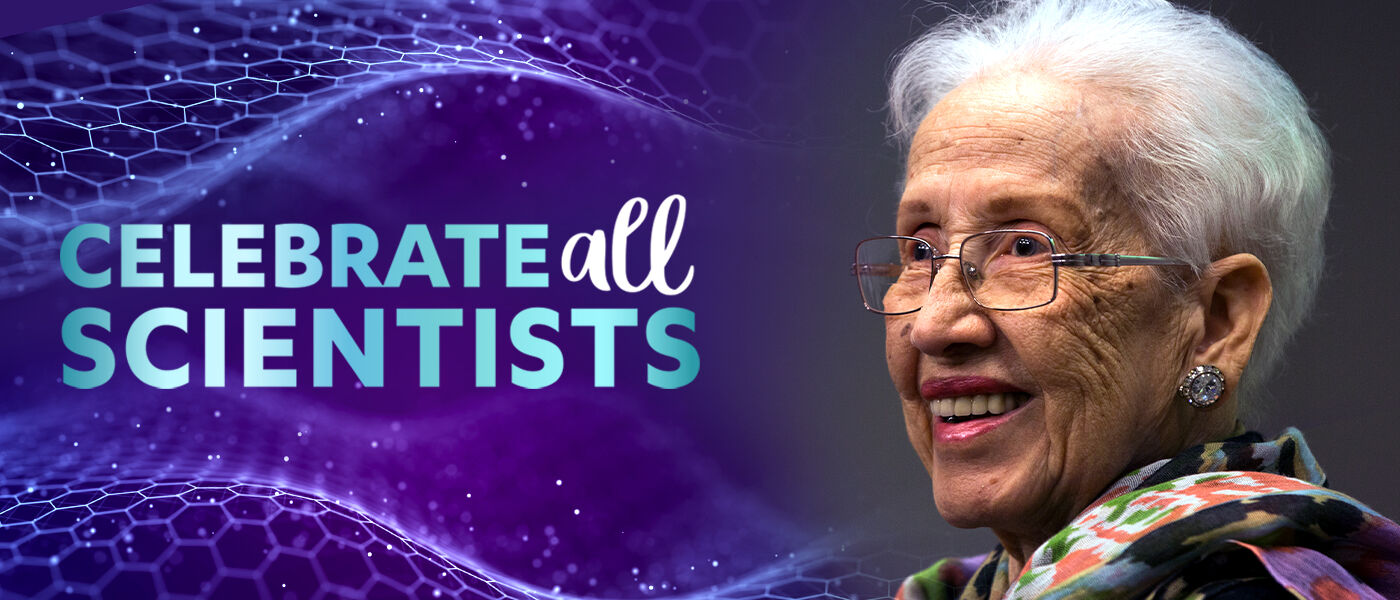Celebrate All Scientists: Katherine Johnson

June 19 is Juneteenth, also known as Black Independence Day, and today, LSC is celebrating NASA Mathematician Katherine Johnson!
Katherine Johnson was not only a brilliant mathematician, but an outspoken advocate for equal access to education and gender equality in science, technology, engineering and mathematics.
From the time she was born in 1918 in West Virginia, her parents instilled in her the importance of education, even moving over 100 miles away since their town did not offer a public high school education to Black Americans. Johnson had a passion for math, especially geometry, and graduated from West Virginia State University at 18 years old with a B.S in Mathematics and French. After working as a teacher, she became the first African American woman to enroll in WVSU’s graduate program!
In 1953, Johnson joined a group of other African American women at the National Advisory Committee for Aeronautics (NACA) and worked as a “calculator,” solving complex math problems used for air and space flight. She quickly made a name for herself, and refused to submit to the norms of the segregated office. When recounting her experience at NACA she said, "We needed to be assertive as women in those days — assertive and aggressive — and the degree to which we had to be that way depended on where you were. I had to be.”
When NACA became NASA in 1958, Johnson began working on space flights, even calculating the trajectories for Project Mercury, which sent the first American into space in Freedom 7, and the first American into orbit around Earth in Friendship 7. John Glenn, the astronaut of Friendship 7, insisted Johnson personally calculate his trajectories by hand before agreeing to take flight.
She then transitioned to the Apollo program, calculating paths for humanity’s first journeys to the Moon. When the Apollo 13 spacecraft malfunctioned, Johnson’s calculations helped get the astronauts back to Earth faster, before they ran out of oxygen. While working on the Space Shuttle missions, she calculated paths for STS-8, the mission that sent the first African American into space, Guy Bluford.
After retiring in 1986, Katherine Johnson continued to inspire students around the country to pursue STEM, no matter their background. In 2016, she reached a new level of fame when a book about Ms. Johnson and the other “calculators” called Hidden Figures by Margot Lee Shetterly was published and later turned into a movie. She has received many honors, including the Presidential Medal of Freedom and the Congressional Gold Medal, and had a computational building at NASA named after her. We here at LSC awarded her with the Genius Award in 2017 for her contributions to space flight and her advocacy work!
Katherine Johnson was a trailblazer for women and Black Americans in STEM. Her legacy lives on in her daughters, who followed in her footsteps, two becoming teachers, and one working as a mathematician at NASA. Her family also started the Katherine Johnson Foundation, dedicated to providing scholarships to low-income students.
This post was written by Maya Joyce, a Planetarium Educator at Liberty Science Center. They studied Astrophysics and Theatre in college. Their favorite exhibit at Liberty Science Center is Wild About Animals, especially the naked mole rats!
